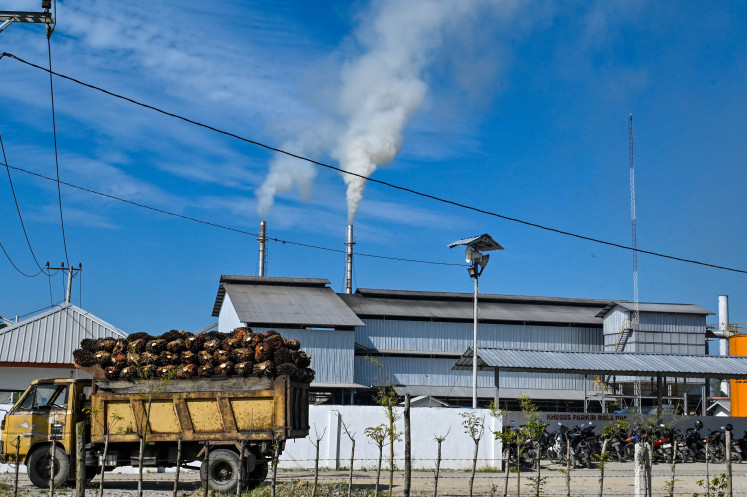Popular Reads
Top Results
Can't find what you're looking for?
View all search resultsPopular Reads
Top Results
Can't find what you're looking for?
View all search resultsSlash-and-burn practices lead to forest fires in S. Sumatra
Officials from the South Sumatra provincial administration have been puzzled by the insis-tence among local farmers in continuing their slash-and-burn practices to convert forests for the development of rubber and oil palm plantations
Change text size
Gift Premium Articles
to Anyone
O
fficials from the South Sumatra provincial administration have been puzzled by the insis-tence among local farmers in continuing their slash-and-burn practices to convert forests for the development of rubber and oil palm plantations.
Such practices constituted the number one cause of forest fires in South Sumatra, said Indra Purna, head of information and observation at Palembang’s Climatology Station on Tuesday.
Achmad Taufik from the South Sumatra Forestry Office’s forest fire control division also confirmed that most forest fires in South Sumatra were caused by slash-and-burn techniques, carried out by local farmers to prepare land for rubber and oil palm estates.
“It is difficult to change the habits among farmers. Such practices have been conducted for years as it is a fast and cheap process,” Achmad said.
Slash and burn farming is a generations-old agricultural practice to clear land quickly through the cutting and burning of forests and woodlands to clear the sites for agricultural purposes.
Achmad said they could only try to persuade farmers against the practice and disseminate legal information on forest burning to help reduce the number of cases.
According to Article 78 of the 1999 law on forest burning, anyone found guilty of burning forests is subject to up to 15 years in prison and a maximum fine of Rp 5 billion (US$525,000).
Aside from the forest burning, peatland found in Banyuasin, Musi Banyuasin, Ogan Ilir and Ogan Komering Ilir is also prone to fires. “They only have to be sparked by cigarette butts and they will go up in flames,” Achmad said.
Indra said that his section had detected up to 691 hot spots in August in 15 regencies and cities across South Sumatra. “The largest number of hot spots was found in Musi Banyuasin with 170, followed by Musi Rawas with 154, and 95 in Banyuasin,” he said.
According to Indra, the number of hot spots would continue to rise until September. “The number of hot spots usually peaks in September when the dry season comes to an end,” he said. Responding to the thick haze blanketing Jami and Riau over the last several days, Indra said it had been caused by winds blowing from South Sumatra to Jambi and Riau.
“Most of the forest fires in South Sumatra have occurred in Musi Banyuasin, which borders Jambi. Moreover, the winds blow to both Jambi and Riau,” Indra said.
Achmad added, however, that despite the various hot spots in the province, they could still be extinguished. This is in contrast to last year, when forest fires affected local activities in nearby areas and cloud seeding was organized
to curb it.
Achmad also explained that his division had set up an integrated team in cooperation with the local police and fire office to control the forest fires. Monitoring posts have also been set up, he added.










